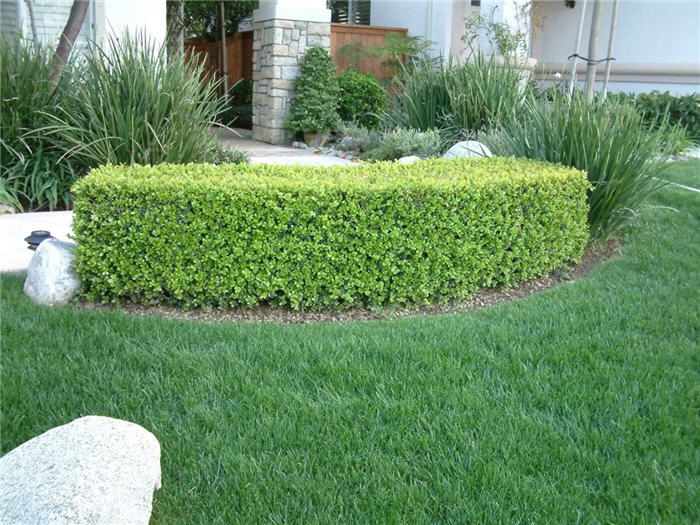| Botanical Name: Buxus sempervirens | |
| Common Name: English Boxwood |

-
Anatomy
-
Culture
-
Design
Plant Type
Broadleaf Evergreen, Shrub
Height Range
1-3', 3-6', 6-12', 12-25'
Flower Color
n/a
Flower Season
n/a
Leaf Color
Green, Dark Green, Variegated
Bark Color
Brown
Fruit Color
n/a
Fruit Season
n/a
Sun
Half, Shade
Water
Medium, High
Growth Rate
Slow
Soil Type
Clay, Loam
Soil Condition
Average, Rich, Well-drained, Moist
Soil pH
Acid, Neutral, Basic
Adverse Factors
n/a
Design Styles
English Cottage, Formal, Japanese, Mediterranean, Ranch, Spanish
Accenting Features
Silhouette, Unusual Foliage
Seasonal Interest
Winter
Location Uses
Background, Entry, Perennial Border, Shrub Border, Foundation, Walls / Fences
Special Uses
Cut Flowers, Hedge, Screen, Topiary, Small Spaces
Attracts Wildlife
n/a
Information by: Stephanie Duer
Photographer: Steve Mullany,Connon N.
Photographer: Steve Mullany,Connon N.
-
Description
-
Notes
This group of boxwood is comprised of many cultivars that vary in size and somewhat in form. Those most commonly available here in clude 'Grahm Blandy' (columnar to 8 feet), 'Suffruticosa' (rounded form to 3 feet), and 'Inglis' (pyramidal to 7 feet). All are evergreen, with medium to dark green foliage and are generally very cold hardy.
Best grown in loamy, well-drained soil in part to full shade. Prefers snady-loam to clay-loam soils, acidic to slightly alkaline pH. Avoid cultivating around plants because they have shallow roots. Thin plants and remove dead/damaged branches annually as needed to improve air circulation. In our hot, dry climate, boxwood is best sited in a sheltered location that will protect it in winter from strong winds and full sun. Carefully remove snow accumulations from plants as quickly as practicable to minimize stem/branch damage. Though not a low water plant, when provided the right soil, light, and mulch, boxwood can manage on just one watering per week.